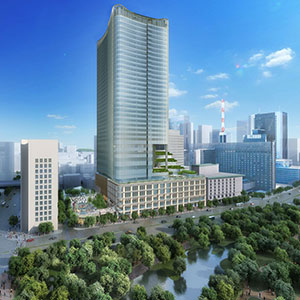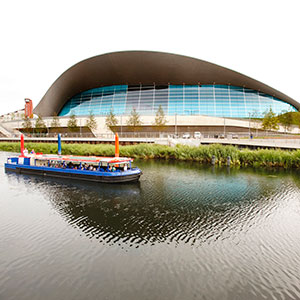Nihombashi Revitalisation Plan aims to revive former hub of Tokyo
- Idea put forth to bury fly-over obstructing iconic bridge
- Mitsui Fudosan organising campaign to restore district
- Creation of communities at the heart of new plan
Every major city in the world has its iconic bridge. London, of course, is graced by Tower Bridge, Sydney has the Harbour Bridge, and for San Francisco it is the Golden Gate.
Tokyo has its own bridge of graceful design and historic importance—only it is invariably overlooked because it is completely in the shadow of an ugly and overpowering elevated motorway.
But the residents and businesspeople of Nihombashi believe the time has come to put their bridge—and their district—back in the spotlight.
“Nihombashi Bridge is very symbolic as it is considered the centre of Japan, because all road distances to major cities have been measured from this point since Tokyo was known as Edo”, said Toshihiro Mochizuki, leader of the office leasing department at major real estate developer Mitsui Fudosan Co., Ltd.
“The motorway was built for the first time that Tokyo hosted the Olympics Games, in 1964, and the planners chose a route that went above the rivers and roads because it was difficult to secure land back then”, Mochizuki said.
“And at that time, people did not really worry too much about what it was doing to the look of the city, because the first priority was still to secure the development of the city and economic growth”.
Attitudes have changed dramatically since then and there is a growing sense that a wrong inflicted on Tokyo’s skyline should be corrected before the city hosts the next Olympic and Paralympic Games, in 2020.
The proposal to dismantle the fly-over and bury it out of sight underground attracted the support of former Prime Minister Junichiro Koizumi, although his comments in 2005 were met with reservations by the governor of Tokyo and the transport minister, primarily on the grounds of cost.
With the city’s infrastructure being scrutinised ahead of 2020, supporters of the broader Nihombashi Revitalisation Plan say this is the perfect time to replace an eyesore with an attraction.
“The plan was started by Mitsui Fudosan and many local companies and businesses about 10 years ago after a famous department store in the area closed.
We and our local partners noticed that there had been a shift in shoppers’ preferred destinations”, Mochizuki said. “There is Ginza, of course, but younger people are now spending their money in Shibuya, Shinjuku and Omotesando”.
To inject new life into Nihombashi, Mitsui—which can trace its corporate roots back to the day, in 1673, when Takatoshi Mitsui opened his kimono shop—has teamed up with local businesses large and small, including the Mitsukoshi department store and Mandarin Oriental Hotel.
“This area has been Mitsui’s home for more than 300 years. It was the heart of the city 100 years before then, and we want to recapture that”, said Mochizuki.
On the east side of Chuo Dori, Mitsui has already completed the Coredo projects of retail, office and residential facilities, which are designed to mesh with the more low-rise backstreets that are the traditional sites of small businesses and artisans.
The district already benefits from the Mitsui Memorial Museum, a new Toho Cinemas complex, the Nihombashi Mitsui Hall and a revitalised Fukutoku Shrine, which has been residents’ place of worship for more than a thousand years.
Much more remains to be done, although the firms and individuals behind the regeneration plan have ambitious aims.
Outlining those plans in a corporate statement, Masanobu Komoda, president and CEO of Mitsui Fudosan, said the company is committed to creating neighbourhoods based on three principles.
“The first is to integrate diverse functions and features, which involves promoting mixed use and integrating the tangible, such as building facilities, and the intangible, or building operations”, Komoda said.
“The second is to create communities, which involves connecting the people who reside, gather or visit”, he said. “And the third is [to design] neighbourhoods that mature with age.
“We believe that a virtuous cycle of the above three will lead to the creation of new value”, he added.
Redevelopment projects are giving Nihombashi a new lease of life, but the sign that the district has truly recovered its glory days will come when that famous bridge emerges from the shadow of the past.






